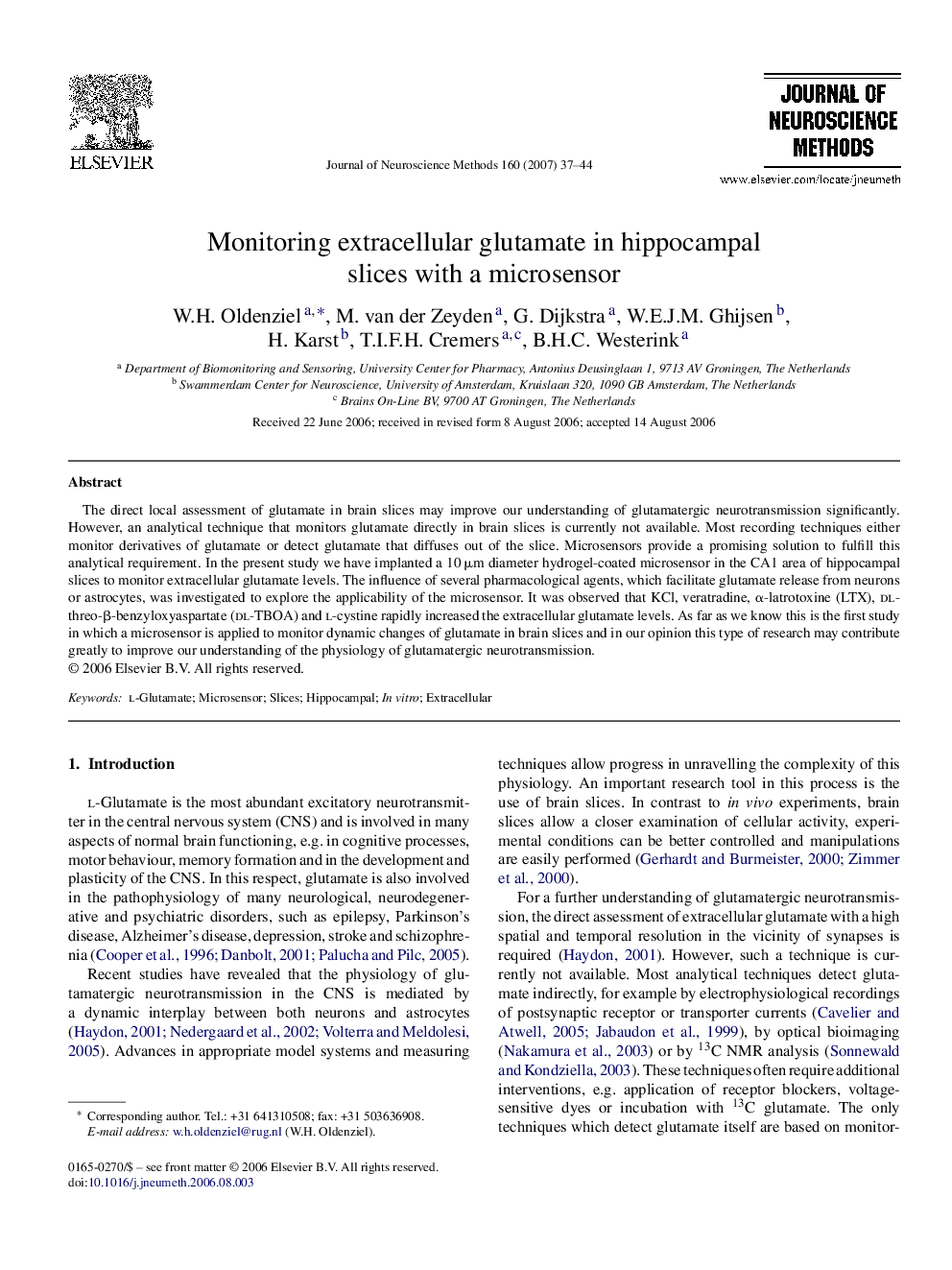| Article ID | Journal | Published Year | Pages | File Type |
|---|---|---|---|---|
| 4336803 | Journal of Neuroscience Methods | 2007 | 8 Pages |
Abstract
The direct local assessment of glutamate in brain slices may improve our understanding of glutamatergic neurotransmission significantly. However, an analytical technique that monitors glutamate directly in brain slices is currently not available. Most recording techniques either monitor derivatives of glutamate or detect glutamate that diffuses out of the slice. Microsensors provide a promising solution to fulfill this analytical requirement. In the present study we have implanted a 10 μm diameter hydrogel-coated microsensor in the CA1 area of hippocampal slices to monitor extracellular glutamate levels. The influence of several pharmacological agents, which facilitate glutamate release from neurons or astrocytes, was investigated to explore the applicability of the microsensor. It was observed that KCl, veratradine, α-latrotoxine (LTX), dl-threo-β-benzyloxyaspartate (dl-TBOA) and l-cystine rapidly increased the extracellular glutamate levels. As far as we know this is the first study in which a microsensor is applied to monitor dynamic changes of glutamate in brain slices and in our opinion this type of research may contribute greatly to improve our understanding of the physiology of glutamatergic neurotransmission.
Related Topics
Life Sciences
Neuroscience
Neuroscience (General)
Authors
W.H. Oldenziel, M. van der Zeyden, G. Dijkstra, W.E.J.M. Ghijsen, H. Karst, T.I.F.H. Cremers, B.H.C. Westerink,
